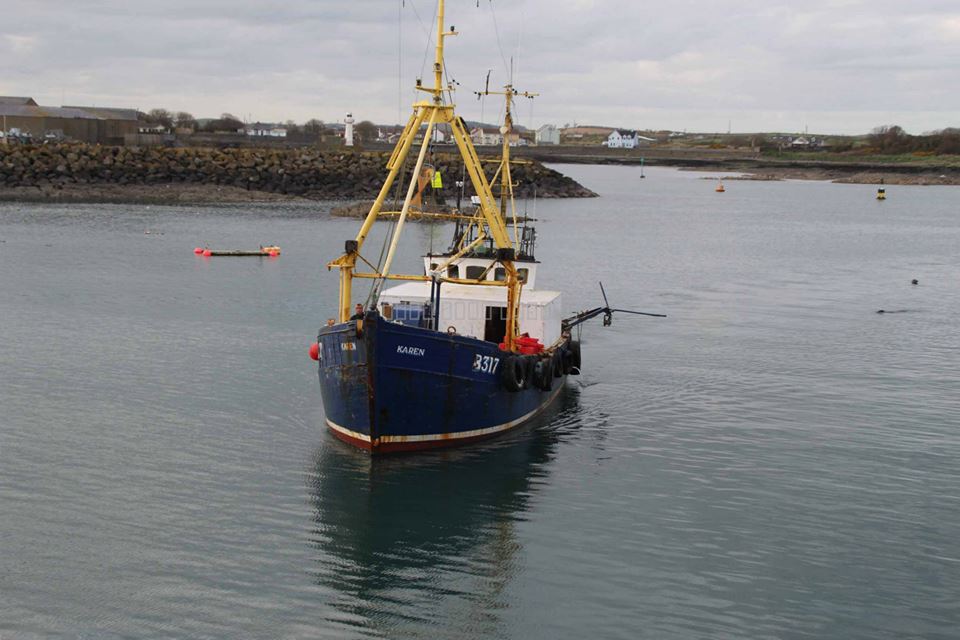Collision between the stern trawler Karen and a dived Royal Navy submarine
Location: East of Ardglass, Northern Ireland.
Accident Investigation Report 20/2016
Investigation report into marine accident including what happened and safety lessons learned:

Fishing vessel Karen (B317) returning to port after the collision (image courtesy of Ross Boats Ltd)
Summary
On 15 April 2015, a dived Royal Navy submarine snagged the fishing gear of the UK registered trawler Karen, east of Ardglass, Northern Ireland. Karen was towed backwards and had partially submerged before being released from the submarine when the trawl warps gave way. The submarine did not surface to render immediate assistance as evidence of the collision on board was either ignored or misinterpreted.
Statement from the Chief Inspector of Marine Accidents
Eighteen months ago, the actions of the command team of a Royal Navy submarine placed the lives of the crew of the trawler Karen in danger. Regrettably, the reluctance of the Royal Navy to fully engage in the subsequent investigation resulted in this report taking significantly longer to deliver than would normally be the case.
The accident happened because of insufficient passage planning by the submarine’s command team and their failure to follow guidance on fishing vessel avoidance. Had its trawl warps not parted, it is almost inevitable that Karen would have capsized and sunk; the collision also presented a very significant risk to the submarine.
The Royal Navy’s Code of Practice for Fishing Vessel Avoidance was created after the loss of the trawler Antares and its crew in 1990; however, it is apparent that lessons learnt after the Antares accident have been lost. As a result, it is now important that the Royal Navy reviews its procedures and training for the safe conduct of dived submarine operations in the same vicinity as vessels engaged in fishing. By its actions, the Royal Navy also needs to rebuild trust with the fishing industry.
Safety lessons
- collision avoidance between a dived submarine and any other vessel is the responsibility of the submarine’s command team. In this case, the submarine’s command team did not take avoiding action to keep clear of Karen because it had been misidentified as a merchant vessel
- passage planning requires that all hazards are taken into account and avoided. The trawlers in the area presented a significant hazard for the submarine; this risk could have been avoided by better planning and execution of the submarine’s passage
- Automatic identification system (AIS) data is used by submarines to aid situational awareness; therefore, it is important for fishing vessels fitted with AIS to transmit all the time
- in an emergency situation, use of the digital selective calling (DSC) distress key will rapidly raise the alarm and also ensure that the coastguard receive the distressed vessel’s position
Recommendations
The recommendations (2016/144 and 2016/145) in this case are intended to ensure that the Royal Navy has the necessary training and procedures in place to prevent recurrence.